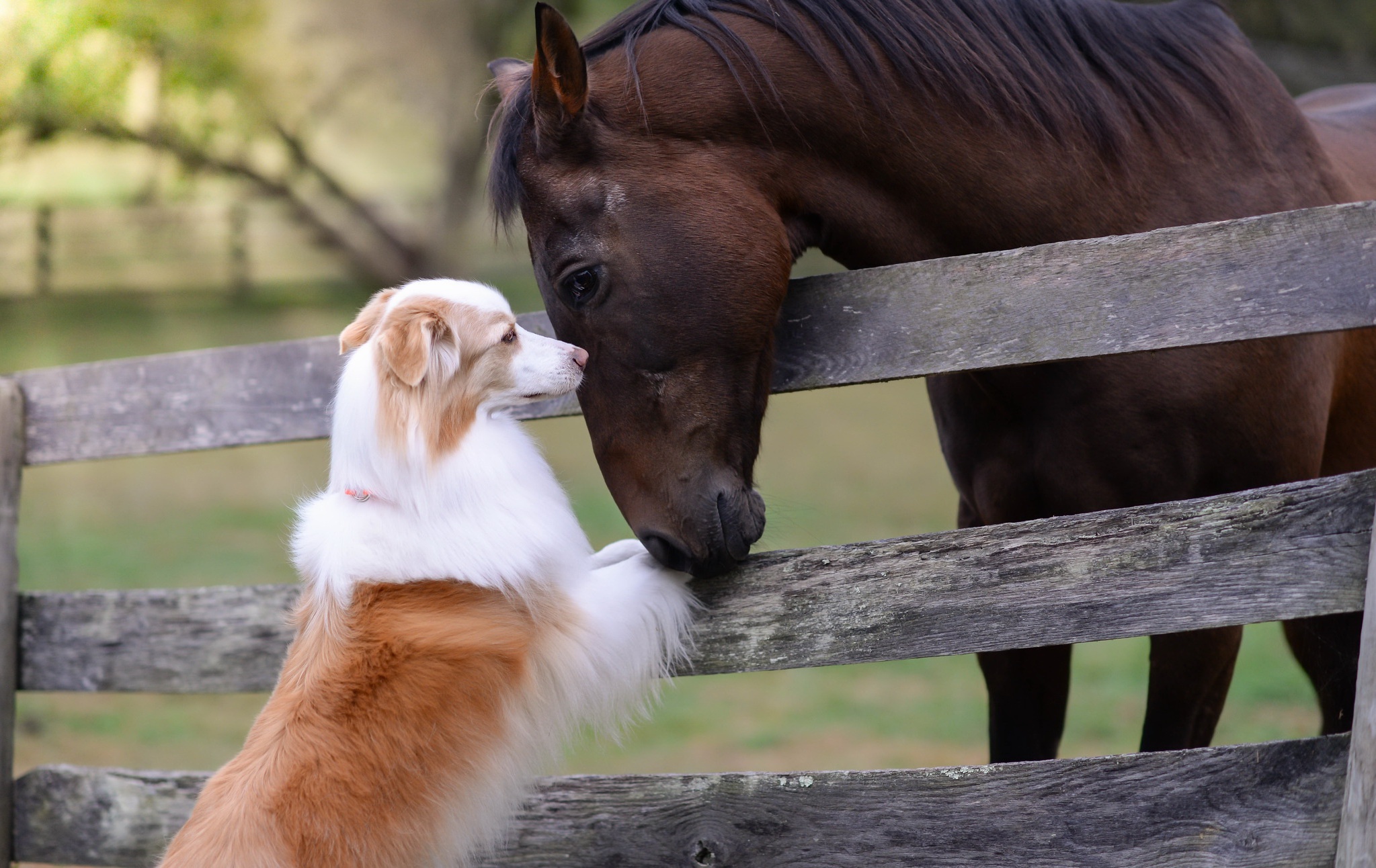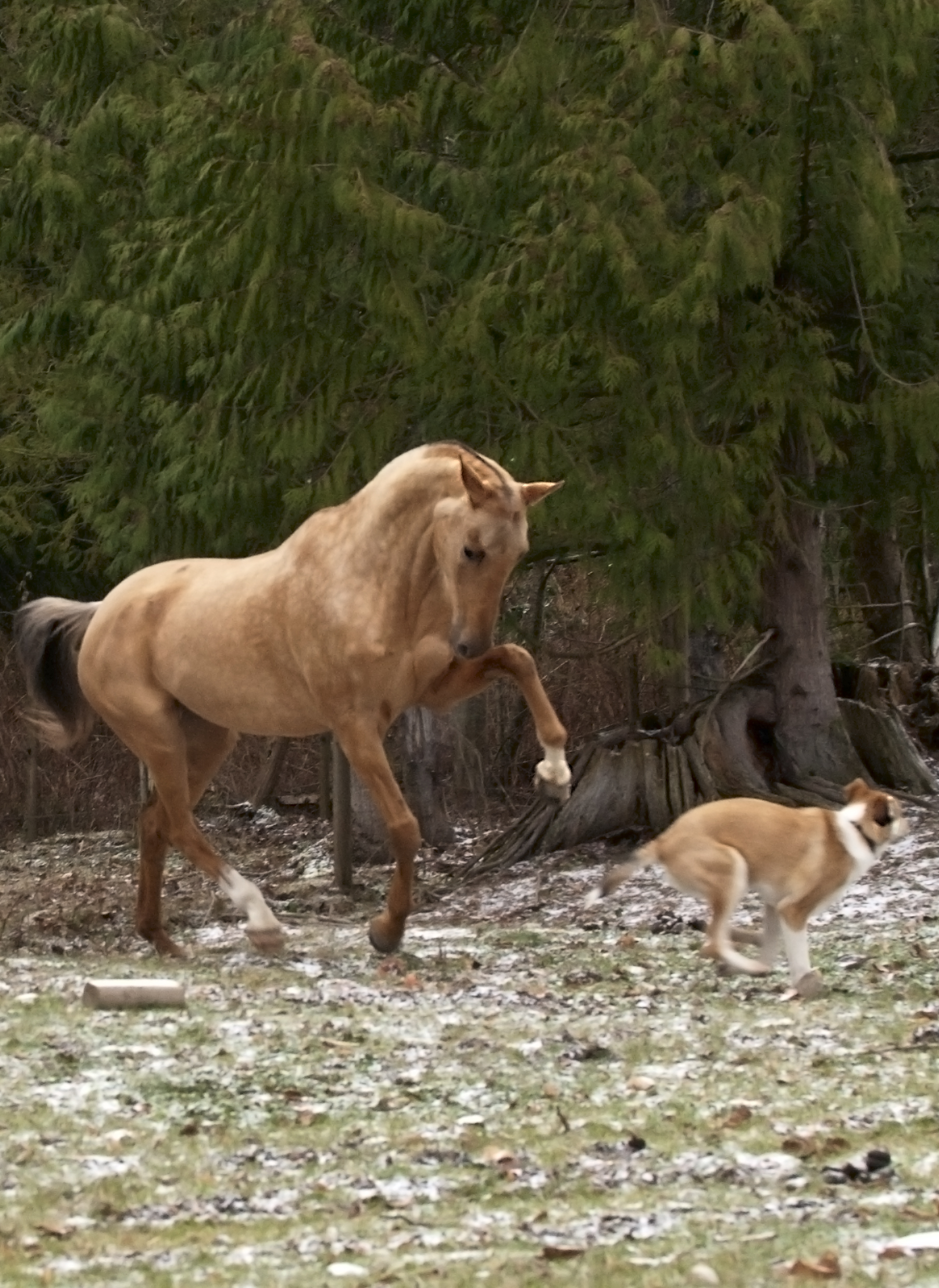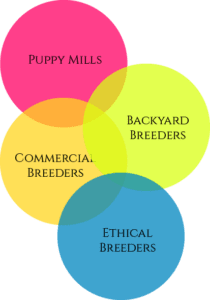Key Takeaways
- Training your dog in basic commands is crucial before introducing them to horses.
- Gradual introductions are key to fostering a calm and safe environment for both animals.
- Understanding and interpreting the body language of dogs and horses can prevent accidents.
- Setting up safety zones and having control during initial interactions is essential for safety.
- Regularly monitoring interactions and knowing the signs of stress will help maintain a harmonious relationship.
Setting the Stage for Farmyard Harmony
Imagine a serene farm where dogs and horses coexist in harmony. This peaceful cohabitation doesn’t happen by chance; it requires thoughtful preparation and a solid understanding of animal behavior. As we embark on the journey of introducing dogs to horses, it’s essential to ensure safety and comfort for all involved.

“Wallpaper horse, dog, friends for …” from www.goodfon.com and used with no modifications.
The Importance of Careful Introductions
It’s a beautiful sight to see a dog and a horse playing together, but getting to that point takes patience and careful planning. Introducing a dog to a horse is not something to rush. The process should be as smooth as a well-groomed mane. We’ll start by familiarizing your dog with the barn environment and the smells and sounds that come with it.
Recognizing Animal Body Language
Just like humans, animals communicate through body language. Understanding the subtle cues can help prevent misunderstandings. A tail wagging dog might not always mean a friendly pooch, and a horse with a swishing tail isn’t just shooing flies—it could be a sign of irritation. We’ll dive into what these and other body signals mean to keep playtime safe.
Prepping Your Pooch
Before your dog can trot alongside a horse, they need to have a solid foundation in obedience. This isn’t just about tricks for treats; it’s about ensuring they listen to you when it matters most.
Training starts with the basics. Here are the must-know commands your dog should master:
- Come: To call your dog back to you, away from a potentially dangerous situation.
- Sit: To have your dog pause and calm down if they’re getting overly excited.
- Stay: To keep your dog in place while you assess a situation or redirect their attention.
Essential Obedience Commands
Each command serves as a building block for creating a reliable and safe environment for interactions between dogs and horses. When your dog responds to these commands, it means they trust and respect your leadership—essential for a peaceful farmyard.
Understanding the Canine Pack Mentality
Dogs are pack animals, and they look to their humans for guidance. By establishing yourself as the pack leader, your dog is more likely to follow your cues and behave appropriately around larger animals like horses.
Guided Interaction Sessions
Now that we’ve laid the groundwork with obedience training and understanding animal body language, it’s time to orchestrate the first face-to-face meeting between your dog and horse. This initial encounter is crucial, as it sets the tone for their future relationship.
Initial Meeting: Setting Up for Success
The first meeting should be controlled and brief. Choose a neutral area where neither animal feels cornered or territorial. Keep your dog on a leash and ensure the horse is in a secure space, like a paddock or a round pen. Allow them to observe each other from a distance, and reward calm and curious behavior with praise or treats.
As they show interest in each other, gradually decrease the distance between them while keeping a firm grip on your dog’s leash. Watch their body language closely. A relaxed posture and soft eyes in both animals are good signs. If either animal shows signs of stress or aggression, calmly increase the distance and try again later.
Maintaining Control: Human Presence and Intervention
Throughout this process, your presence is key. Your dog looks to you for guidance, and your horse will take cues from your behavior. Stay calm and assertive. If you’re nervous, they’ll pick up on it, and it may affect their reactions to each other.
Intervene immediately if you notice any signs of aggression or fear. A quick distraction can redirect your dog’s focus and prevent a negative association with the horse. The goal here is to build positive experiences, reinforcing the idea that being around each other is pleasant and rewarding.
Remember, there’s no set timeline for these introductions. It might take several sessions over days or even weeks for your dog and horse to feel comfortable around each other. That’s perfectly fine. Rushing this process could lead to setbacks, so let’s take our time and do it right.
Here are some steps to ensure a controlled introduction:
- Start with short, supervised sessions and gradually increase the time.
- Always have treats on hand to reward calm behavior.
- Keep the energy levels low; a calm demeanor encourages trust.

“File:Pagoda & Buddy.jpg – Wikimedia Commons” from commons.wikimedia.org and used with no modifications.
Monitoring Play: Signs of Safe Interaction
Once your dog and horse are comfortable with each other’s presence, you can start to monitor their play. Play is a natural and healthy way for animals to interact, but it’s crucial to recognize the difference between safe and unsafe play behaviors.
For example, a dog play-bowing (front end down, back end up) is typically an invitation to play and a good sign. A horse might show their willingness to engage by gently nuzzling the dog or softly blowing through their nostrils.
However, play should always be supervised, especially in the early stages. Keep an eye out for signs that play is becoming too rough or that one of the animals is not enjoying the interaction. Learn more about introducing a new pet into a multi-dog household to ensure safe and positive introductions.
Positive signs of safe play include:
- Dog and horse are both relaxed, with loose body language.
- They take turns in their play, with neither animal dominating the interaction.
- Play is gentle, with no biting, kicking, or chasing involved.
Negative signs that require intervention:
- One animal is trying to escape or avoid the other.
- Excessive barking, nipping, or kicking.
- Any signs of stress or fear, such as pinned ears in horses or tucked tails in dogs.
Positive Behaviors to Encourage
Encouraging positive behaviors during playtime is as important as preventing negative ones. Reward your dog for calm and gentle interactions with treats and praise. Similarly, if your horse is being patient and gentle with your dog, offer them their favorite scratch or treat. This positive reinforcement tells both animals that they’re doing something right and strengthens their bond.
Warning Signs: When to Step In
Be vigilant and ready to step in if play escalates or if one animal seems uncomfortable. Remember, safety first. If you’re unsure about an interaction, it’s better to err on the side of caution and separate the animals before a situation escalates. With time, you’ll become adept at reading their signals and can intervene before any potential issues arise.
Training Tips for Long-term Success
For your dog and horse to maintain a safe and friendly relationship, consistent training and reinforcement are necessary. This doesn’t stop after the first few introductions; it’s an ongoing process that should be integrated into their daily lives.
Consistency is the key. Dogs thrive on routine, and horses are creatures of habit. Regular, positive interactions will help cement the behaviors you want to see. Keep training sessions short and sweet, focusing on reinforcing good behaviors and gently correcting any missteps.
Consistency and Reinforcement
Just like any good habit, consistency in training and interaction will lead to the best outcomes. Always supervise playtime and be consistent with your commands and rewards. This helps both your dog and horse understand what is expected of them and what behaviors are acceptable.
Integrating Play into Daily Routine
Try to incorporate interaction into the daily routine. This could mean taking your dog along when you’re feeding the horses or having them accompany you during stable chores. Over time, the animals will get used to each other’s company, making for a more relaxed and natural relationship.
Remember, fostering a safe and friendly environment for your dog and horse to interact is a rewarding experience that takes time and patience. With these guidelines, you’re well on your way to creating a peaceful farmyard where your animals can play and thrive together.
Risks and Emergency Preparedness
Even with the best training and precautions, accidents can happen. That’s why it’s crucial to understand the risks involved when dogs and horses interact and know how to respond in case of an emergency. Being prepared can make all the difference in ensuring the safety and well-being of your animals.
Some risks include the dog getting kicked by the horse if they come up behind them too quickly or the horse getting spooked by an overly energetic dog. It’s important to always be aware of the dynamics between your animals and to keep an eye out for any signs of trouble.
Have a first aid kit handy for both your dog and your horse. Know the basics of animal first aid, and have your veterinarian’s number on speed dial. In case of an injury, acting quickly and calmly can help prevent further harm.
Here’s what to include in your animal first aid kit:
- Bandages and wraps
- Antiseptic wipes and creams
- Styptic powder to stop bleeding
- Saline solution for cleaning wounds or eyes
- A digital thermometer
- Emergency contact numbers for your vet and the nearest animal hospital
Understanding and Minimizing Risks
To minimize risks, always supervise interactions between your dog and horse. Never leave them alone together, especially in the early stages of their relationship. Make sure your dog is well-exercised before meeting the horse, as a tired dog is less likely to be overly boisterous or excitable.
First Aid and Veterinary Intervention
If an accident occurs, assess the situation calmly and provide first aid if necessary. For minor injuries, clean the wound and apply a bandage. For anything more serious, or if you’re in doubt, contact your vet immediately. It’s better to be safe than sorry when it comes to the health of your animals.
Frequently Asked Questions
Is it safe to leave my dog and horse alone together?
It’s not recommended to leave your dog and horse alone together. Even if they seem to get along well, it’s always best to supervise their interactions to prevent any possible accidents or misunderstandings.
How often should dog-horse interactions be supervised?
Dog-horse interactions should always be supervised, especially during the initial stages of their relationship. As they become more accustomed to each other, you may be able to relax your supervision slightly, but you should always be within earshot or line of sight.
Can all dog breeds safely interact with horses?
Most dog breeds can safely interact with horses if they are properly trained and socialized. However, some breeds have a stronger prey drive and may require extra training and supervision.
What should I do if my dog is aggressive towards the horse?
If your dog shows aggression towards the horse, separate them immediately. Consult a professional trainer or behaviorist to work on your dog’s behavior before attempting another introduction.
How can I tell if my horse is stressed by the dog’s presence?
Signs of stress in horses include pinned ears, tail swishing, stomping, or trying to move away from the dog. If you notice these behaviors, remove the dog from the situation and give your horse some space.
Creating a safe environment for dog and horse playtime is a rewarding challenge that requires patience, understanding, and a commitment to ongoing training and supervision. By following the guidelines outlined in this article, you can foster a peaceful and playful relationship between your dog and horse, ensuring happy times at the farm for everyone.
Option A.


